

I met Cheng Lin accidentally one evening when I was visiting Vientiane, the capital of Laos. The city was built during French colonial times and still has charm even though it is poorly maintained. Slowly walking along a street, I saw a sign saying: «Art Gallery. Cheng Lin — artist» I did not pay much attention thinking it was probably one of the Chinese businessmen who usually sell antique Chinese art. But the next day when I saw that sign again in daylight, I decided to enter and take a look.
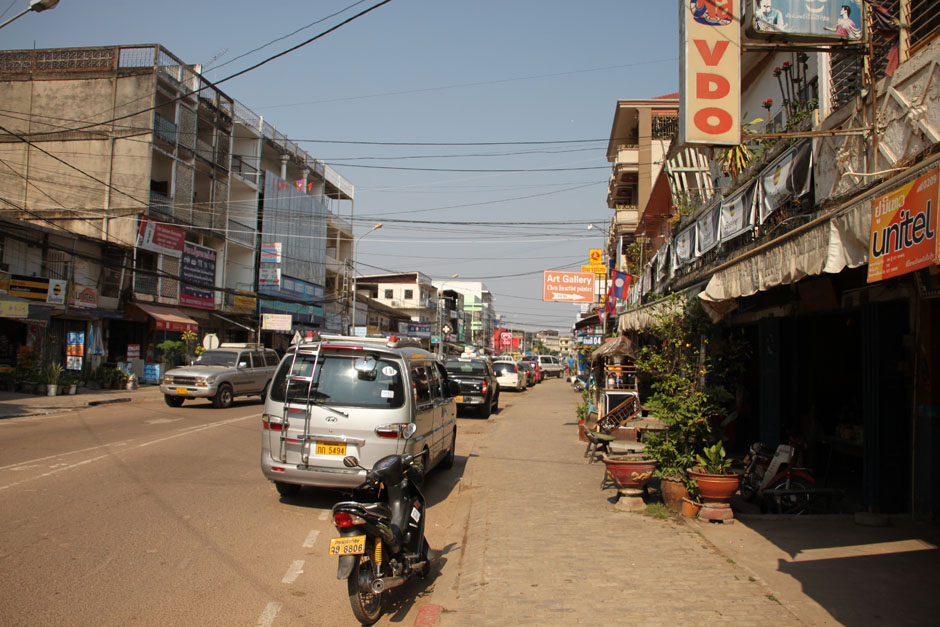
One of the streets of Vientiane, the capital of Laos, where the Cheng Lin workshop is.
What I found inside certainly exceed all my expectations. A couple of dozen pictures painted in Impressionism style were hung rather randomly. It was easy to guess at the influence of the French painting school. The artist himself was sitting behind a canvas, painting something in bright yellow.
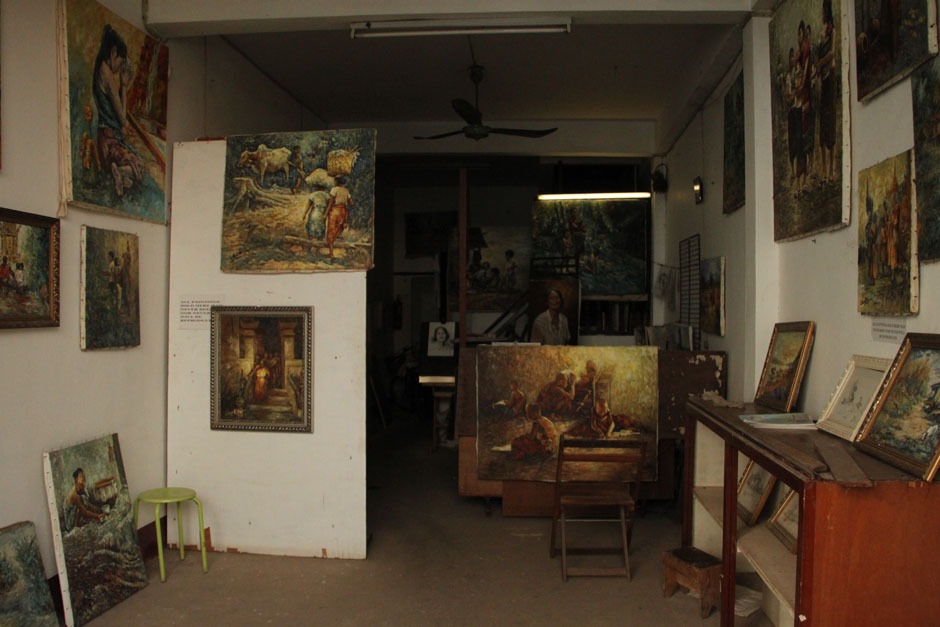
Cheng Lin workshop
Cheng Lin (陈林) does not speak English or other languages, so he was glad for the opportunity to talk in Chinese with me. About 10 years ago, he visited Laos to see a friend and came back in a month. He has never left this country again, since then. He became fascinated with the savagery of nature and society in Laos, especially in the northern villages. He believes it is a perfect environment for an artist to work in. He usually spends a few months of the year in the remote villages of different tribes, making hundreds of pencil sketches. Returning to the capital, he seldom leaves the studio, painting in oils scenes of everyday life, people’s faces, and images of nature. He is now 53, and as he says, he is just beginning to be a true artist. In his words, «To become such would be impossible if I remained in China.»
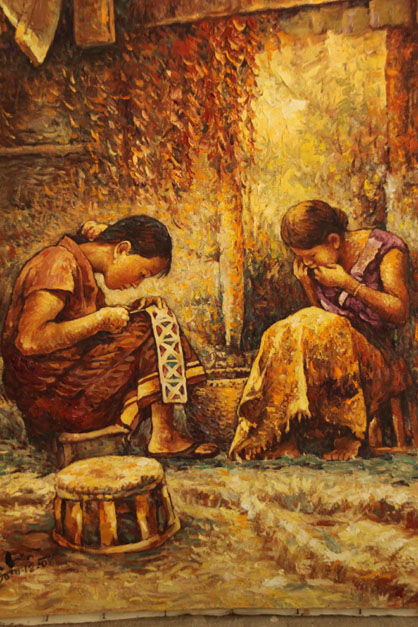
«Most Valuable» Oil on canvas, 2011. The painting shows two Laotian girls working on wedding clothes and jewelry. Traditionally, girls begin to prepare their wedding clothes at the age of 11 or 12 years, and sew until they are 17 or 18 years, enshrining the essence what is the most valuable in life for them into beautiful patterns. The jewelry will go to the groom’s house as a symbol of the bride’s soul.
Most of his paintings are sold to the tourists from different countries. The French Embassy also purchased several dozen paintings. The Chinese government published some of Cheng Lin’s work and articles in Chinese art magazines, and called him to teach art at the university. He replied, «I’m an artist, not a teacher, how I can explain it to them?»
The artist lives on the second floor of his gallery. His life is simple and modest — travel from village to village, canvas and paint. Back in China he was married once. Now he is divorced with two grown children, whom he has not seen for several years.
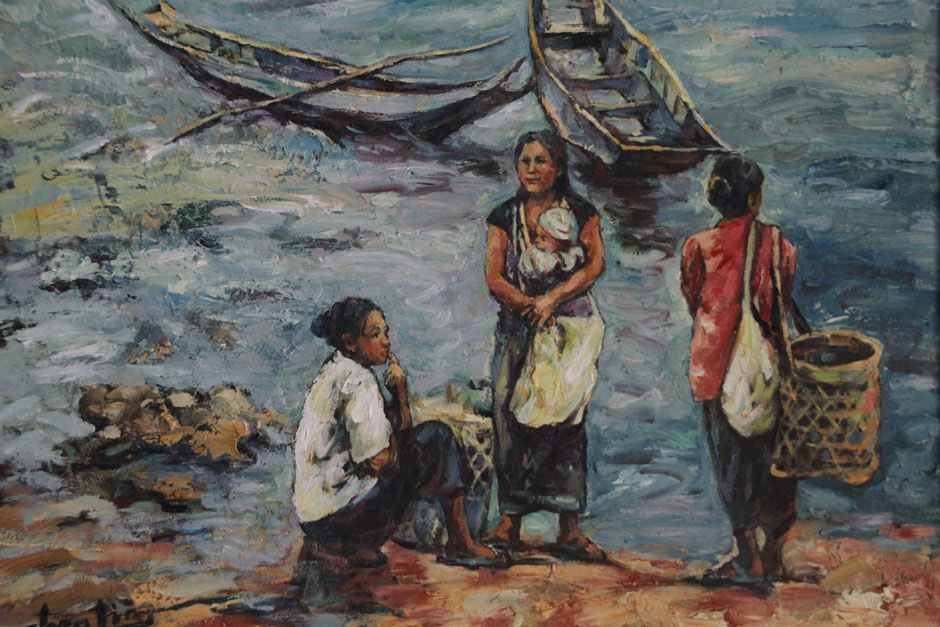
«Crossing the river» Oil on canvas, 2011. In Laos streams are the roads for the most of the population
«Listen, you said you love tea?» Cheng Lin asked me. «You know, there is a town called Phongsali in the north part of Laos. People there make tea from the big tea trees grown around the town, and it is very tasty tea. If you have time, make sure you go there and try the tea, it is really excellent tea. I was there last year but I did not buy enough — it’s all finished already.» He drew a map for me on a small piece of paper with some directions and names.
That evening, around 8pm three visitors entered the gallery: an elderly Frenchman, and his son with a girlfriend. Monsieur was an artist, famous for painting classic portraits — his name was Bertrand. It was interesting to observe his reaction while he was looking at Cheng’s paintings. The style of paintings was clearly French but made by a Chinese, and yet very original. Cheng Lin offered tea to all; the conversation started. Monsieur Bertrand told us that he usually makes only five or six portraits per year but each is more detailed than a photograph. Cheng Lin said that he produces almost a hundred paintings per year working intensively on several pieces at the same time, using wide strokes. Then the Frenchman offered cigarillos, and the discussion flowed smoothly into the contemplative mood. I was glad to be there that evening and to use my language skills to translate their dialog in Chinese and French. They both were happy to be able to communicate, and I was grateful to have such interesting company.
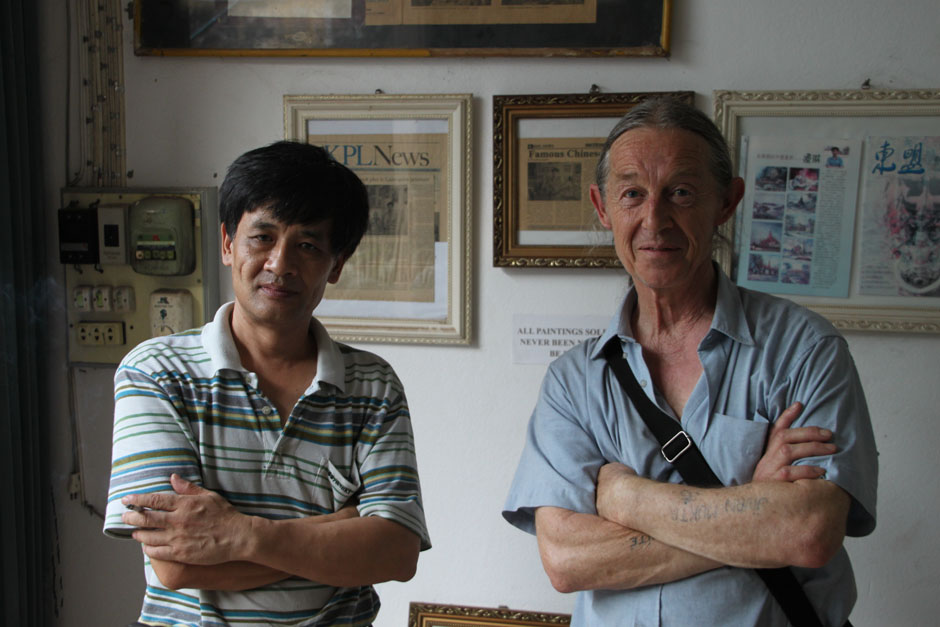
Cheng Lin and Monsieur Bertrand — two artists of two different cultures.
The next morning Cheng continued painting, the Frenchman flew back to France and I, following the artist’s advice, went to Phongsali to find those big tea trees.
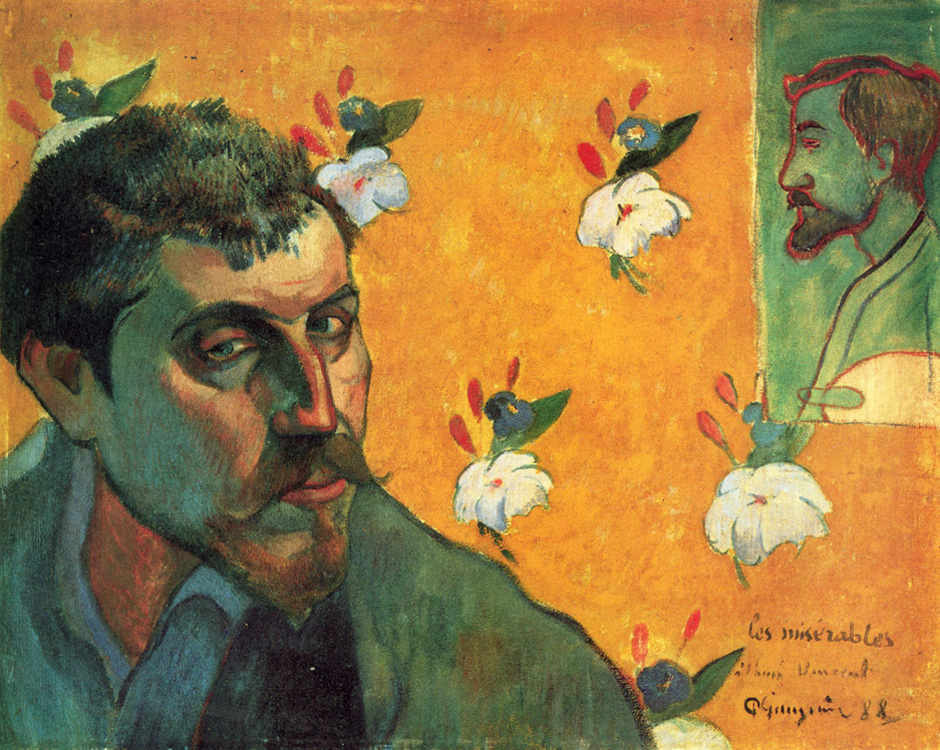
Paul Gauguin (1848-1903) Self Portrait.
P.S. Now, my third time going to Phongsali, I stopped by the Cheng Lin Gallery again. He was there as usual working. He told me that he had painted more landscapes, went sketching to Burma and Tahiti but still spent most of his time in the studio. He seems to me as an example of a Chinese with «Gauguin syndrome.»